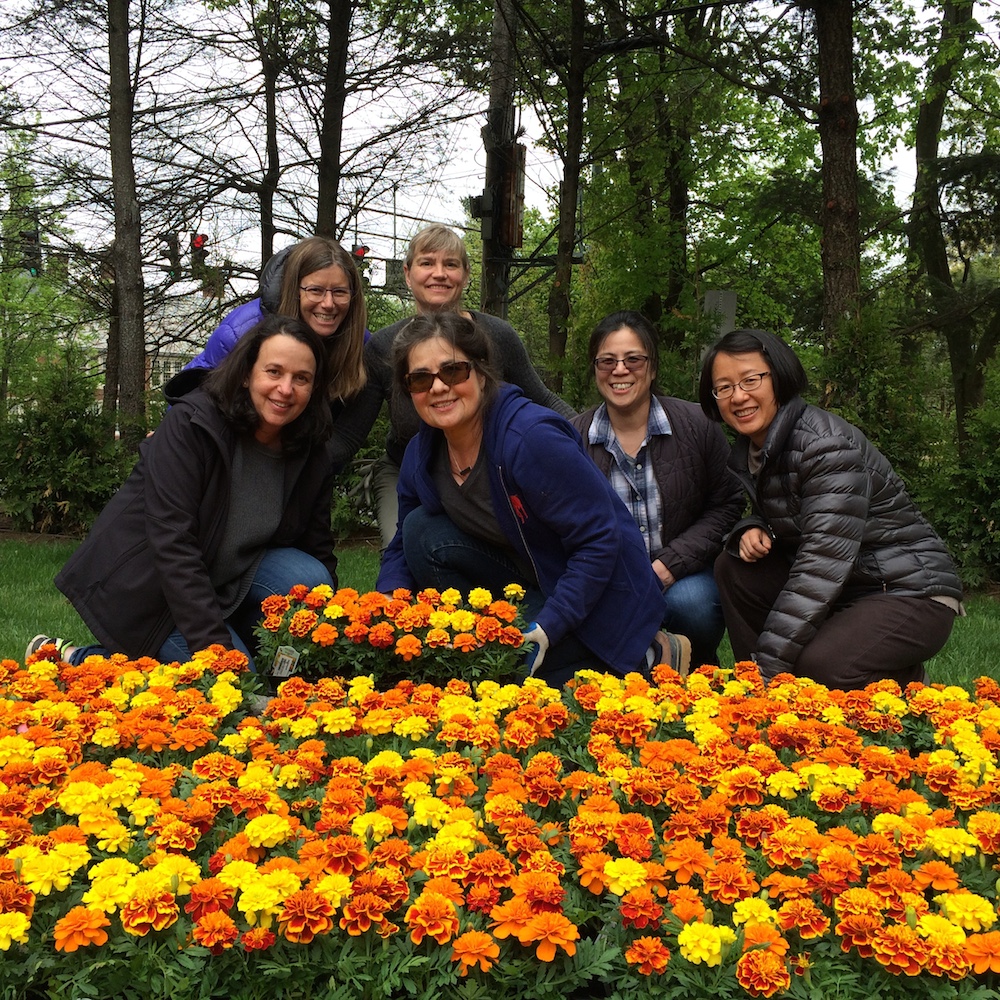Option D - Save Greenacres and Let Everybody Win
- Details
- Written by Joanne Wallenstein
- Hits: 5129
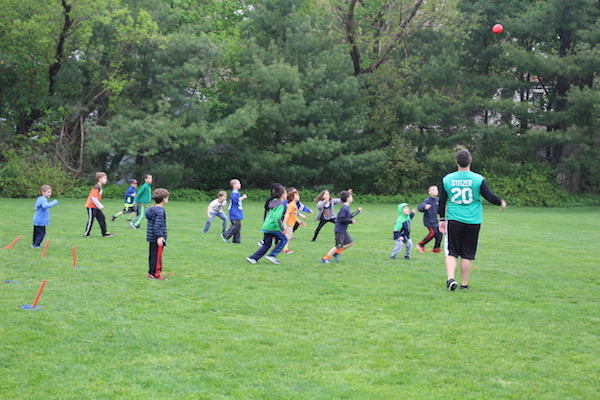 This letter was sent to Scarsdale10583 by Greeenacres Resident Jamie Kayam:
This letter was sent to Scarsdale10583 by Greeenacres Resident Jamie Kayam:
Some of us may have already met, as I have served on the Village's Board of Architectural Review for two years now, and have just committed to a new term of continued volunteer service.
Like many of you, I live in Greenacres. My wife and I have three children who will soon be entering the school system over the next few years.
Regarding the future of Greenacres School, to date, I've been observing a debate of opposing voices that support a very limited set of options the Board of Education has provided, but from all sides, I just see people digging into positions as if the debate is over.
Village Hall and the BAR have no official or legal affiliation with the Board of Education on the matter of school construction, however, as a concerned citizen and a member of the BAR, I feel I have a perspective worth sharing. At BAR meetings we are challenged to scrutinize hundreds of projects in the village with a mandate to keep Scarsdale's character and quality-of-life preserved as much as possible.
For Greenacres there are many issues we could all come together on, yet the public argument continues to circle a small range of mediocre options. This just isn't the best way to view the situation.
Let's start by reviewing some issues we can all likely agree on; we all want:
- The best school environment.
- The most green space.
- Preservation and curated change that makes sense for our neighborhood.
Now consider what the BOE has offered us:
- Option B. Build an extension on the current structure. This will include a disruptive and potentially dangerous process to deliver a cramped addition on a crowded lot.
- Option C. Build a new school in the middle of a valued green space to gain more parking spots and an under-developed building. This design ignores many options that would maximize its effectiveness as a public structure. The proposed design has no basement, it lacks multiple large spaces and it has a sprawling footprint. At the time of my review, this design also included an inaccurate plan for a new green space in place of the demolished school that did not account for ground elevations that will result in a loss of usable space.
Options B and C are lacking in quality and do not offer change worthy of our community. A professional posture would immediately suggest more options be made available.
Let's keep this simple so everybody can win.
Some process suggestions:
- Demote the current firm from exclusivity to design the future of Greenacres School.
- Open up the design process so as many ideas as possible can flow in from as many sources as possible.
- Require new designs to present a complete and accurate vision for the future of Greenacres School.
Don't get caught up in the urgency of the matter — we have time to create a better product.
My personal design suggestions:
Build a larger, more useful institution on the north, west, or east side of Greenacres Field, with a fully-functioning basement level, and more large rooms, and courtyards, and rooftop greenhouses, and lots of other good stuff, and yes, include a parking lot and delivery lot as well.
Permanently close the current Huntington Avenue passage and consider a relocation of the passage to accommodate a new design.
Present a new design for the south side of the field that includes a drop in the elevation where the existing old school would be demolished, complete with a retaining wall to present a leveled, usable green space that will replace the lost space on the north side.
Present a plan that keeps Greenacres Park open and available to the public during construction.
I realize this is a busy time for the BOE and all residents, and I applaud the extended effort everyone is making to move the process forward. During the first rounds of the BOE's presentations and meetings, I had reached out to the BOE to volunteer to help as a concerned resident, and although I have not been called upon, I continue to offer to help.
As time permits, I am going to post designs of how I envision potential new concepts. Click here to view my designs:
On a closing note, I recently brought my oldest son to Greenacres School for kindergarten orientation. This is an exciting and wonderful time for all young families and neighbors, and I know we can all work together to continue the tradition of excellence in Scarsdale.
Thanks for your time.
Scarsdale Goes Green For Arbor Day and Y.E.S. Office
- Details
- Hits: 6062
Pictured here are volunteers Ronny Hersch, Marian Green, Diana Kwong, Lian Wang, Lauren Rimland and Susanne Jones helping to sort and distribute plants.
The Scarsdale Youth Employment Service (YES) Office celebrated Mother's Day with their annual plant sale fundraiser. The YES Office is located at Scarsdale High School and staffed by parent volunteers. The office matches students with local residents and businesses to find suitable part time employment.
Scarsdale Named Tree City
Scarsdale plants tree in celebration of Arbor Day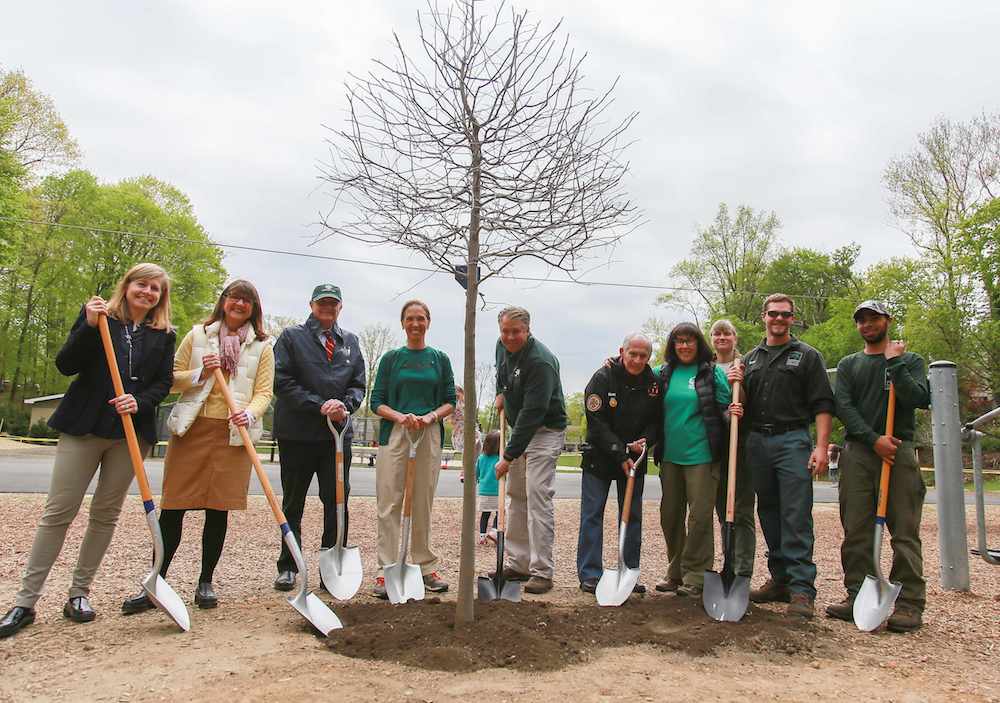
Scarsdale was named a 2015 Tree City USA by the Arbor Day Foundation in honor of its commitment to effective forest management.
The Tree City USA program is sponsored by the Arbor Day Foundation, in partnership with the Forest Service and the National Association of State Foresters.
The Arbor Day Foundation is a million member nonprofit conservation and education organization with the mission to inspire people to plant, nurture, and celebrate trees. For more information about The Arbor Day Foundation click here.
Scarsdale achieved Tree City USA recognition by meeting the program's four requirements:
- a tree board or department
- a tree-care ordinance
- an annual community forestry budget of at least 2 dollars per capita
- an Arbor Day observance and proclamation.
"Tree City USA communities see the impact an urban forest has in a community first hand" said Dan Lambe, President of the Arbor Day Foundation. " Additionally, recognition brings residents together and creates a sense of community pride, whether it's through volunteer engagement or public education".
Trees provide multiple benefits to a community when properly planted and maintained. They help to improve the visual appeal of a neighborhood, increase property values, reduce home coding costs, remove air pollutants, and provide wildlife habitat, among other benefits.
Click here for more information about the program
Follow us on instagram! @Scarsdale.10583 to keep up with everything Scarsdale
Westchester County Health Department Determines that the Death of a 7 year-old Eastchester Girl is an Isolated Event
- Details
- Written by Joanne Wallenstein
- Hits: 10089
Lily Love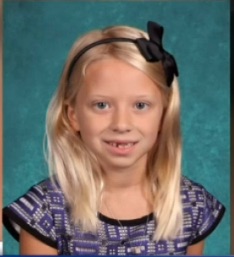
NBC News reported on Tuesday April 26 that the Health Hundreds attended Love's funeral at Hitchcock Church on Wednesday April 27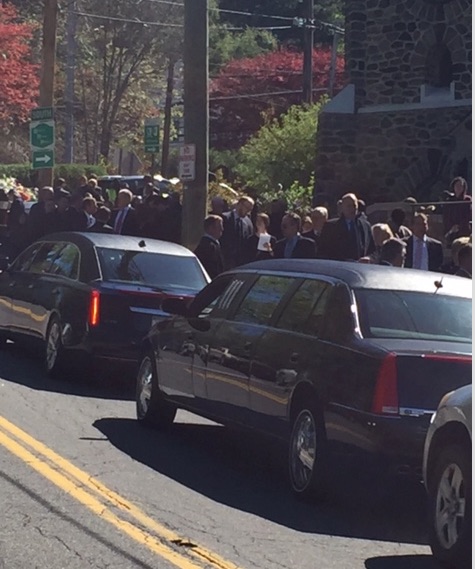
Contributions in memory of Lily can be made to the Hitchcock Church Lily Fund to be used for rebuilding the church playground. Please send checks payable to the Hitchcock Church Lily Fund to:
Hitchcock Presbyterian Assumptioin Church
6 Greenacres Avenue
Scarsdale, NY 10583
New Paver Initiative to Fund SHS Construction, PTA Calls for Donations to Scholarship Fund
- Details
- Written by Joanne Wallenstein
- Hits: 3481
Pavers will be installed in a checkerboard pattern in a new courtyard garden with benches and trees.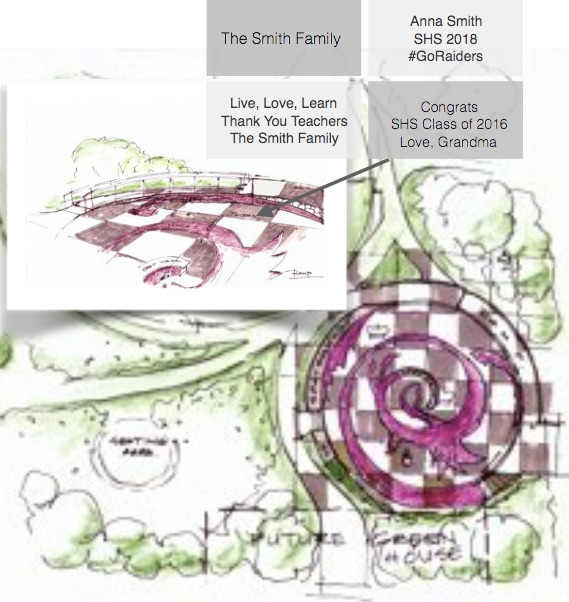
To date, the Schools Foundation has raised over $1.6 million in capital funds toward their goal of $2.6 million. But they need the support of everyone in the community to reach the finish line.
Pavers are designed to be personalized -- honoring graduates, teachers, families, teams or others -- and are available for $250 and $1,000. The pavers will be displayed in a "paver garden" in a redesigned courtyard at the high school, adjacent to the new Design Lab. Called the Bander patch garden, the pavers will be incoroporated into a large chessboard design in a garden with benches and trees.
Mark Bezos, the Education Foundation's board president, noted, "We are very pleased to invite everyone in the community to help us with this vital project. We know that a Design Lab and new Fitness Center at the high school will improve the educational experience of our children and have a very positive impact on the entire school community."
A similar initiative took place more than a decade ago to raise money to install the high school's first turf field. Contributors purchased pavers inscribed with their names which are now at the entrance to the high school track.
Residents will receive a mailing about the "Pave the Way" initiative this week. Watch for it and consider doing your part to fund the Health and Fitness Center and Design Lab at Scarsdale High School. Click here to buy your paver today.
http://www.scarsdaleschoolseducationfoundation.org/
PTA Scholarship Fund Calls for Donations:
As the school year winds down, the SHS PTA Scholarship Fund for College finds that they have many applicants but are below their annual goal for donations received. This will directly impact the number of grants they are able to make, as well as the amount they can give to each student.
Please help them make sure that the door to higher education is open to all students. The Fund provides one-year grants to graduating SHS seniors who need financial assistance in order to attend college. They rely on donations from Scarsdale residents, as well as local businesses and organizations.
This year there are 19 retiring teachers/staff in the district, including:
Edgewood: Ellen Anders, Wilda Savarese
Greenacres: Nancy Closter, Maggie Hoffee
Heathcote: Dassi Citron
SMS: Margaret Fox, Dorothy Golden, Andrea Tripodi, Sharon Waskow, Sarah Whittington
SHS: Roger Capucci, Sandra Cisco, Tom Conrad, Ann Liptak, Sue Peppers, Beth Schoenbrun, Paul Sheehey, Ihor Szkolar, Laurence Brown
What better way to thank them for their long-standing contributions to our schools than to make a donation in their honor!
If you have already given this year, the committee thanks you for your generosity and for your commitment to the young people in our community. Donations can be made to SHS PTA Scholarship Fund, PO Box 147H, Scarsdale, NY 10583 or online here.
CNC Leaders Offer Thoughts on the Non-Partisan System
- Details
- Written by Joanne Wallenstein
- Hits: 6484
Village Trustees and Justice on election night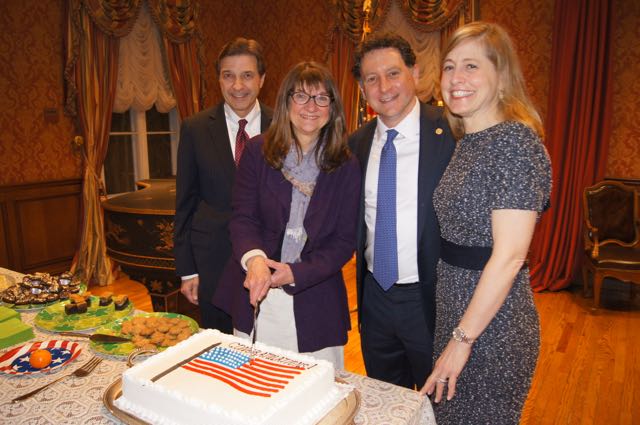
Last week, Max Grudin (MG) was appointed Chair and Daniel Finger (DF) Vice Chair of the Procedure Committee for the Scarsdale Citizen's Nominating Committee. Both are members of this year's graduating class of the Citizens' Nominating Committee who nominated candidates for Village Trustee and Village Justice.
We asked the two some questions about the system and how this year's results might affect the future:
Max and Daniel: Please tell us a bit about yourself: Where do you live – how long have you lived in Scarsdale? What is your professional background, what civic activities have you been involved in?
MG: I am originally from Ukraine. I have lived in Scarsdale (the Overhill area) for 10 years. Over the last 10+ years I have been working in the financial industry managing equity portfolios. I am the immediate past president of the Overhill Association and have been a CNC member for the last three years. Among some other commitments, I have participated in voter registration activities in Pennsylvania and have been active in supporting reforms in Ukraine.
DF: I am from Scarsdale and have been a Scarsdale resident for approximately 34 years including the last 10. I am an attorney and for the last 13+ years I have been practicing in White Plains with my parents and my brother at the law offices of Finger & Finger, A Professional Corporation. While I have been active in the village for several years, most recently I am serving on the Board of Architectural Review of the Village of Scarsdale and I have been a CNC member for the last 3 years. I am also a Coach and Grade-Coordinator (currently for the 2nd grade boys) of the Scarsdale Little League. Professionally, I am active in the New York State Bar Association and other professional associations.
Explain how the nominating process typically works (for those who are not familiar with our system).
Many years ago the village decided to adopt a non-partisan electoral process to guard against excessive negative campaigning. The process works, but it is a bit hard to explain. To simplify, it is an annual three-stage process. First, a thirty-person Citizens Nominating Committee (CNC) is elected on a rolling three-year term. The committee members equally represent each of the five elementary school districts of the village to make sure that each neighborhood's views are represented. The CNC meets to nominate a candidate for each vacant Village Office (i.e. Mayor, Trustee, and Village Justice).
As part of the nomination process, the CNC reviews the applications submitted on behalf of each candidate, listens to presentations from the candidates, and vets each candidate.
Together, the candidates constitute a "non-partisan slate" for the village elections. Most of the time the village elections are not contested, which means that there are no candidates other than the non-partisan slate.
Why was this year different?
The process this year proceeded the same in previous years and the CNC nominated the three candidates for trustee that it felt were the best candidates after reviewing all of the submissions and materials presented to it.
In order to further analyze the election and the process, we need to review the principles and procedures the CNC follows to see if anything needs to be done to improve the nominating process.
Having said that, we want to emphasize that we are dealing with volunteers. All Trustee candidates on this year's ballot had made tremendous contribution to our community. They are respectable and outstanding leaders of our community. One of our goals is to bring in more volunteers into the process. We honor the commitment of the current volunteers. This is a good way to attract new people to the process.
What are the benefits/pitfalls of the due diligence process?
Most candidates who present before the CNC have professional track record as well as a great track record of involvement in the community. Checking their references is typically rather straightforward. At that point it becomes a discussion whose candidacy is the best fit for the vacancy.
It seems that there may be a couple of slight discrepancies in the process. One is that candidates' names are not being publicized to protect their privacy and avoid any negative perception if they are not nominated. Of course, that is impossible when the candidate is a standing trustee. In that case failure to be renominated is in public view. The other issue is that a standing trustee has a public record on the issues faced by the village, while other candidates do not have that. This is one of the reasons why CNC members are asked to review each candidate's qualifications rather than their views on issues.
In the past few years it has been difficult to find people to run for the CNC. How may this have affected the process?
MG: My understanding is that in most years the CNC elections are competitive. I can speak about Fox Meadow - it is usual to have four candidates for two CNC vacancies. Of course, we encourage residents to run for the CNC to contribute their ideas and views. Has the somewhat limited pool of CNC candidates affected the process? My opinion is a firm "No". But there is no doubt that increased diversity brings a lot of benefits.
Being a CNC member is a rewarding experience. The committee meets about four times in the winter, but during that time you get to meet possible trustees and many other outstanding people in our community.
Do you think that standing trustees who are applying for a second term should be given any priority over new applicants?
MG: This question has been raised many times and the Procedure Committee will thoroughly debate it. I have heard an opinion that the CNC should review credentials and qualifications when applicants are nominated for their first term. When a standing trustee applies for the second term, should the CNC primarily consider whether that applicant had committed very significant errors? Perhaps, but this could also be a double-edged sword, as any failure to be renominated could be perceived as a great setback. All of us should recognize the effort made by trustees - it is indeed like a second job. We are very grateful to them for their service.
One other point I want to make is that up until the last two years it had been very unusual not to renominate a standing trustee. In fact, the only case when a trustee was not renominated was Edwin deLima many decades ago. I heard that perhaps the reason he was not renominated was that he had objected to converting downtown open space near Scarsdale Community Baptist Church to a parking lot. That space has since been bought with private money (I understand that the Overhill Association contributed funds) and converted into a beautiful downtown park that is now known as deLima park. This is one of the reasons why I think that consideration of position on issues has some downsides.
Does the CNC consider resident's views and the overall popularity of a standing trustee when deciding whether or not to renominate a trustee for a second term?
The CNC seeks feedback on each candidate. The representation of all neighborhoods on the CNC is supposed to act as one way to gauge residents' views on a trustee. A general measure of the overall popularity is not easy to assess though.
Is the Procedure Committee considering any changes to the resolution this year? If so, what is under discussion?
First, we believe that the system has worked very well for decades. We will proceed carefully. While we will certainly consider ways to improve the system, we want to make sure that we are not over-reacting to an isolated incident.
We want to express our gratitude to Howard Nadel and Lena Crandall for their effort in helping organize the work of the Procedure Committee. We have already started receiving written suggestions and we have had conversations with a number of people. If we choose to adopt any proposals, we will need to be careful about how to make them work within the Non-Partisan system.
Given what occurred, do you think we will see more challenges to the CNC in the form of independent candidates or write-in campaigns in the coming years?
It is important to have an option that allows a path to elections outside of the non-partisan system. That is a great check of the system. At the same time the overall track record of the present system has been very positive. Our Non-Partisan Resolution is not static. It was initially adopted in 1930. Since then it has been amended multiple times and it has served us very well over the years.














